
Laurence Herfs
Keywords: Drawing, Gender, Tree
My practice is based on the investigation of the female body in transformation. Through drawing, I interweave the female voices of mythology and art history with a personal contemporary imagery in order to connect my own body, my own experience within it, to the stories of those who came before.
THE YEAR I BECAME A TREE is a polyphonic installation of drawings, poetry and quotes that weaves together stories of abuse of the female body on three layers: the mythologies of Daphne and Flora who turned to trees, the story of what happened when abuse got called out at KABK this year, and the artist's personal story of burnout in the wake of assault. Through the metaphor of the tree, the installation seeks to express the affect of abuse on the body: rage within frozen matter, unable to move or speak, crooked and vined emotions tangled up with grief. But to be a tree also means to be connected to a mycorrhizal network of other stories, and when those roots are exposed, those stories hold the power of collective resistance. Only by connecting our stories together can the personal truly become structural.
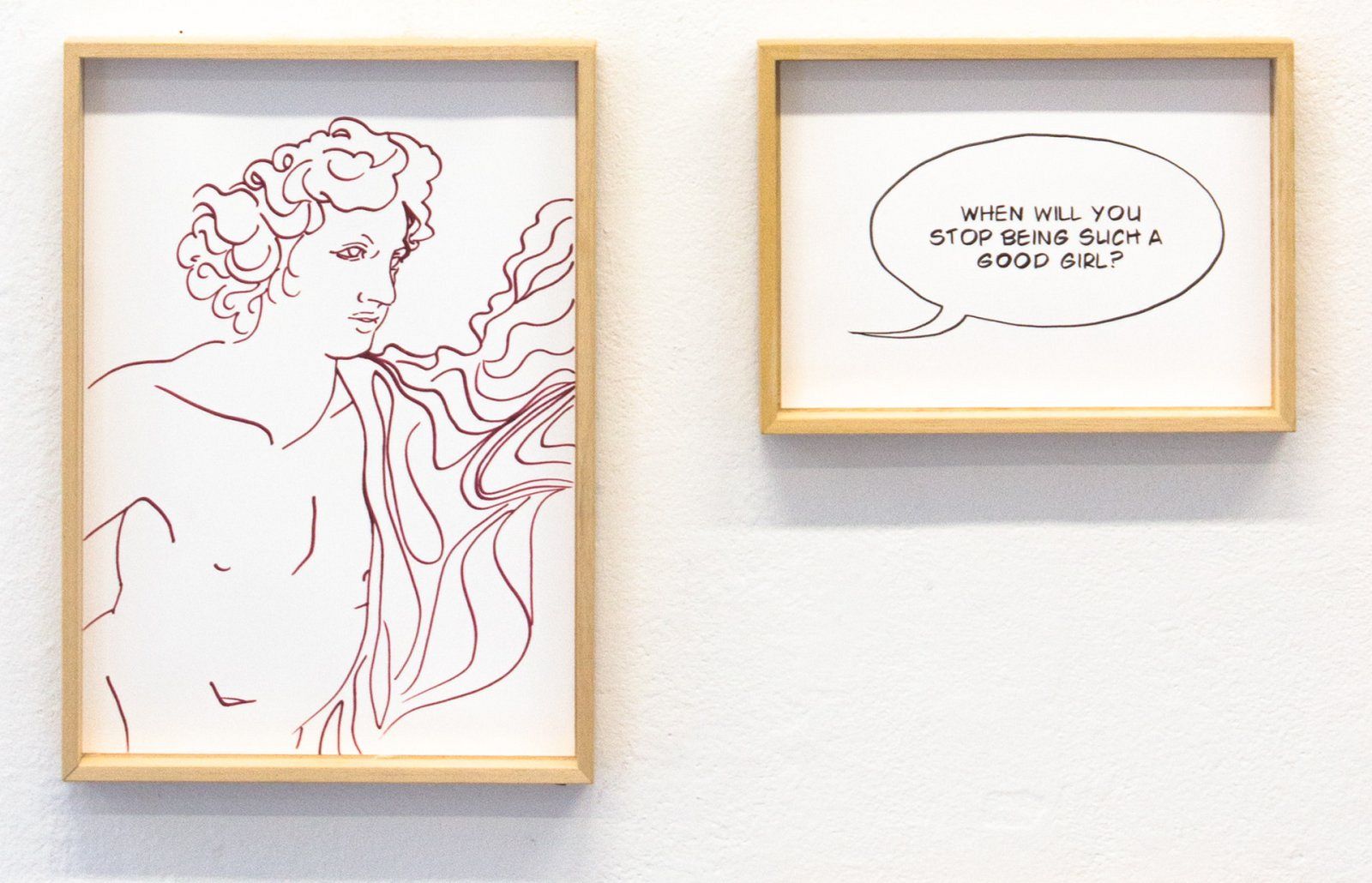
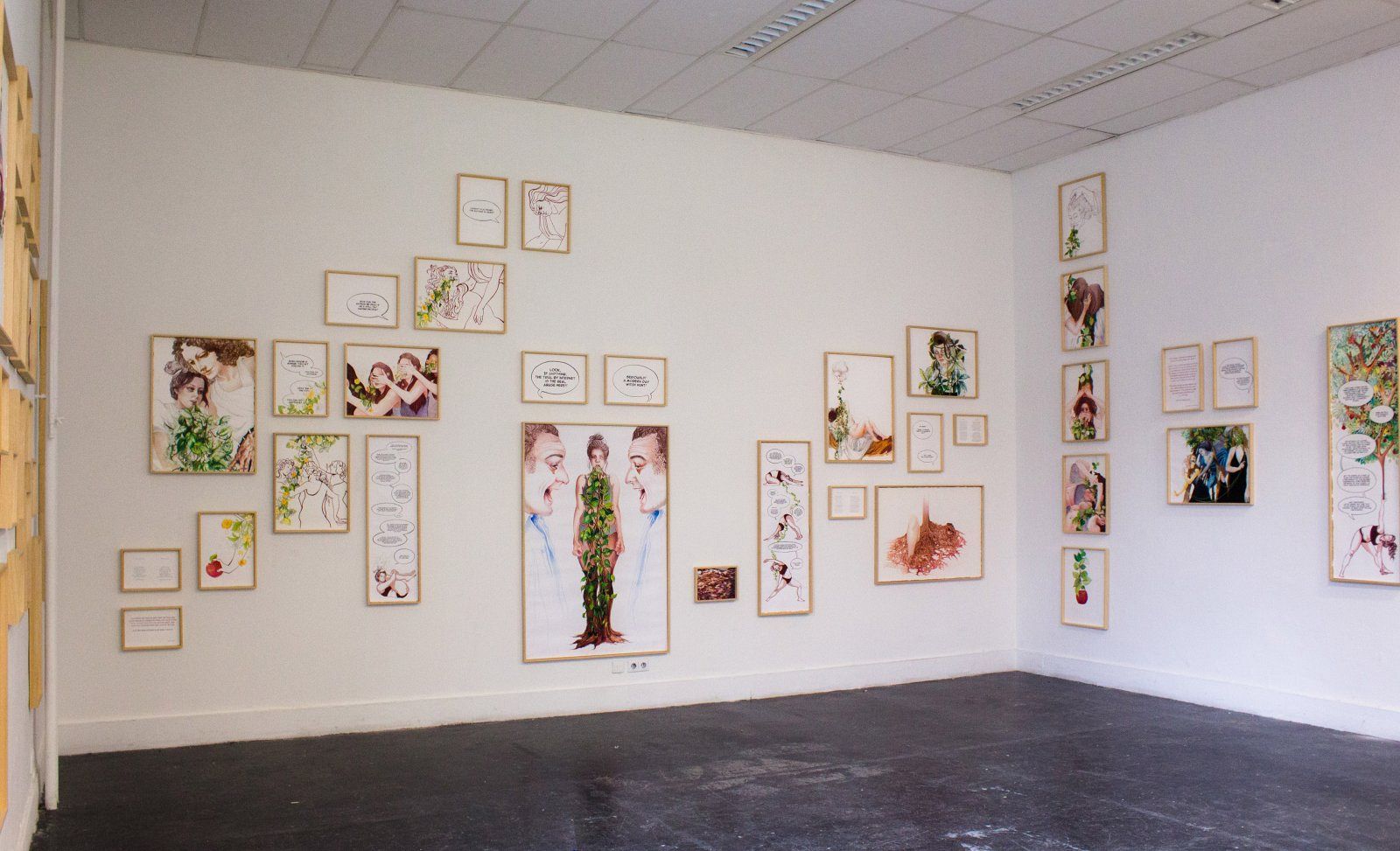
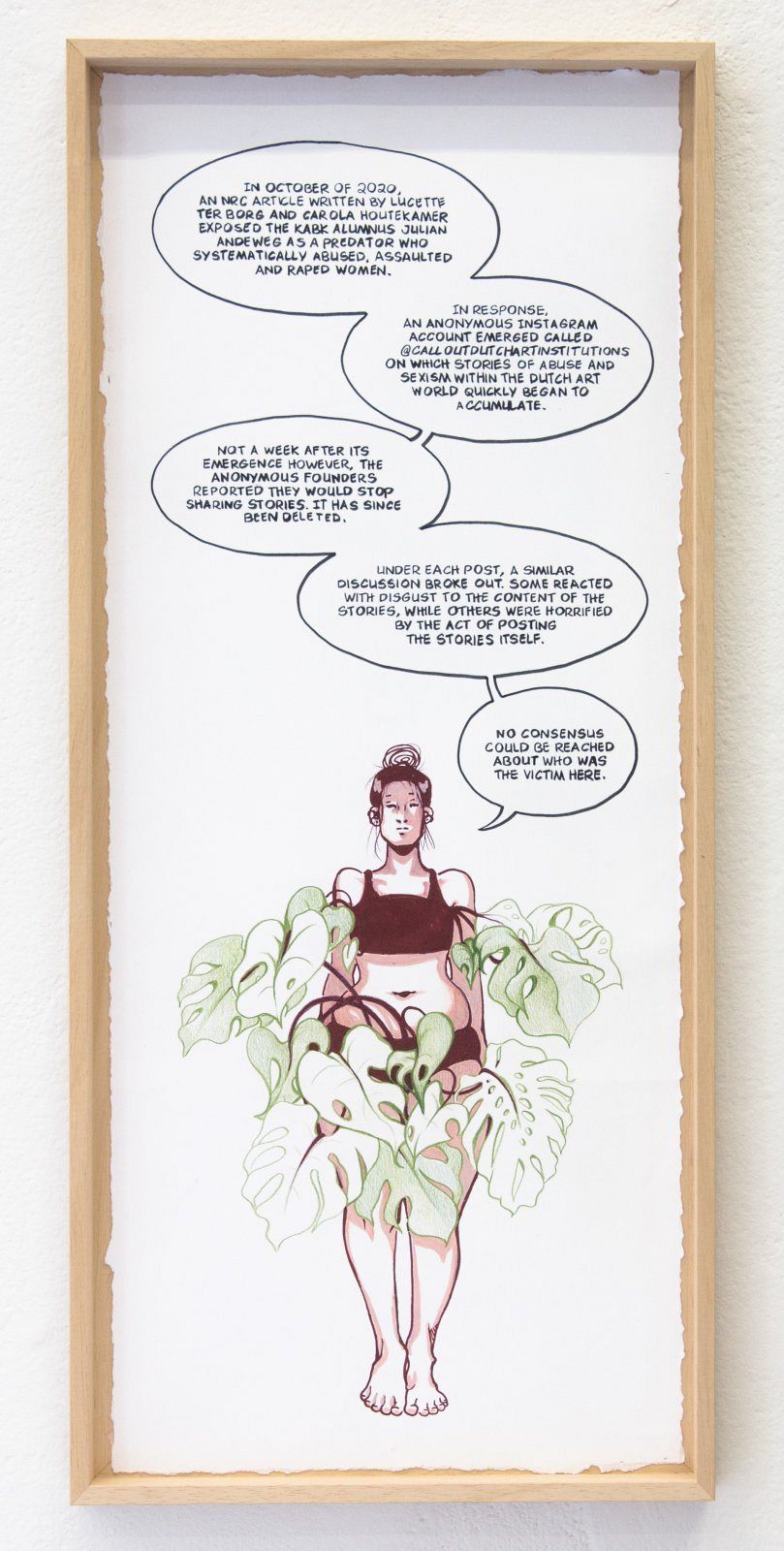
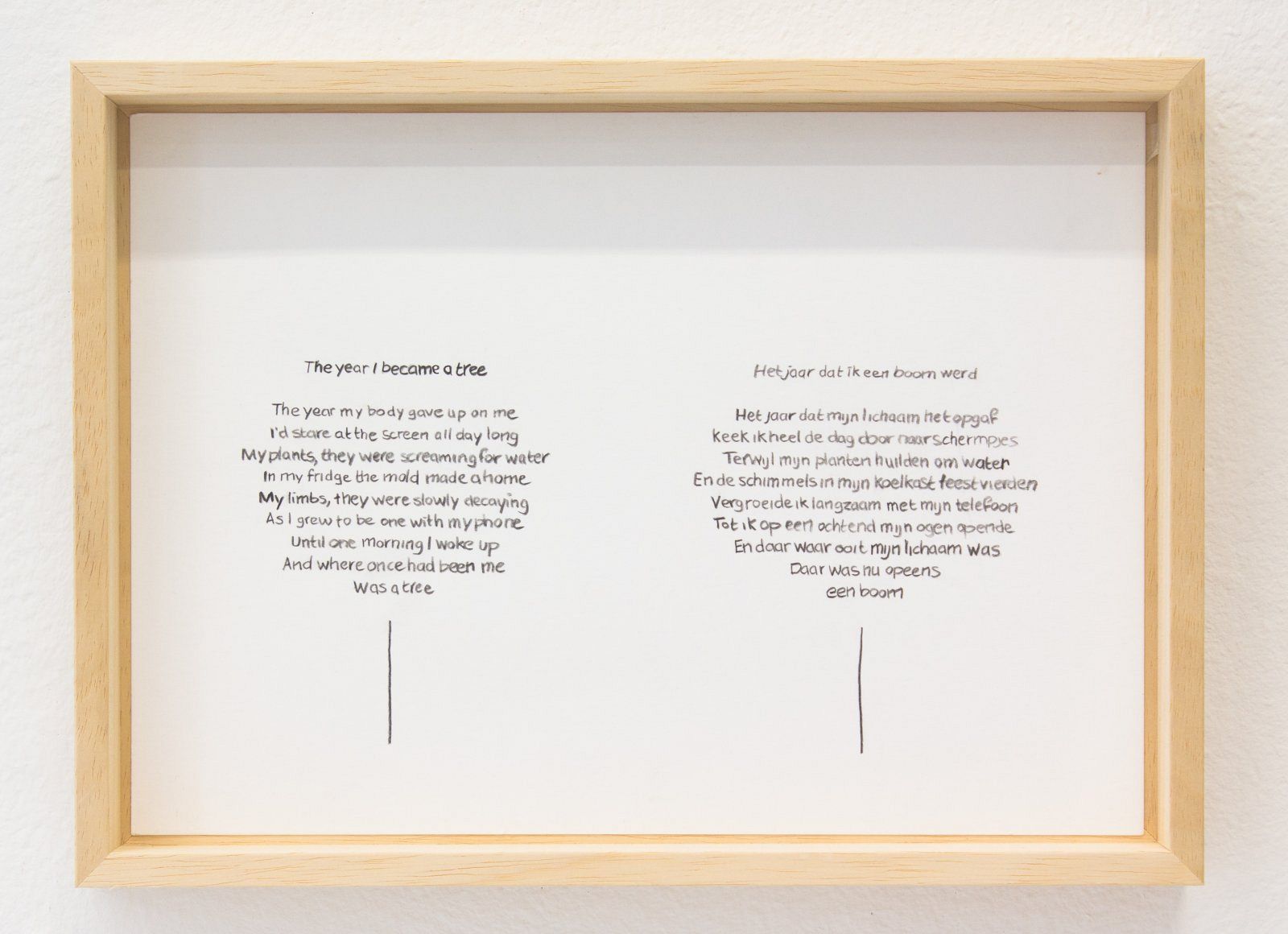


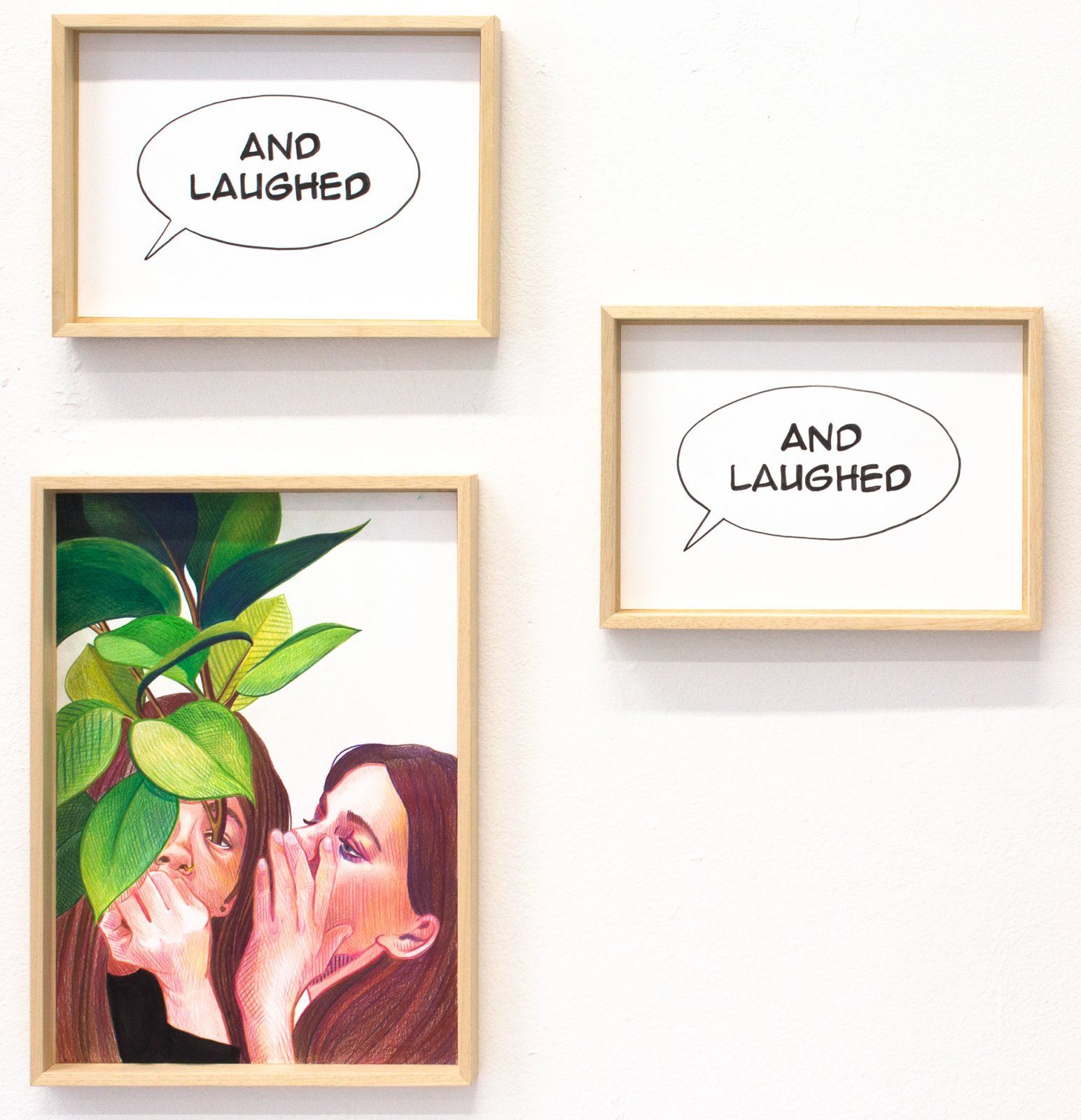
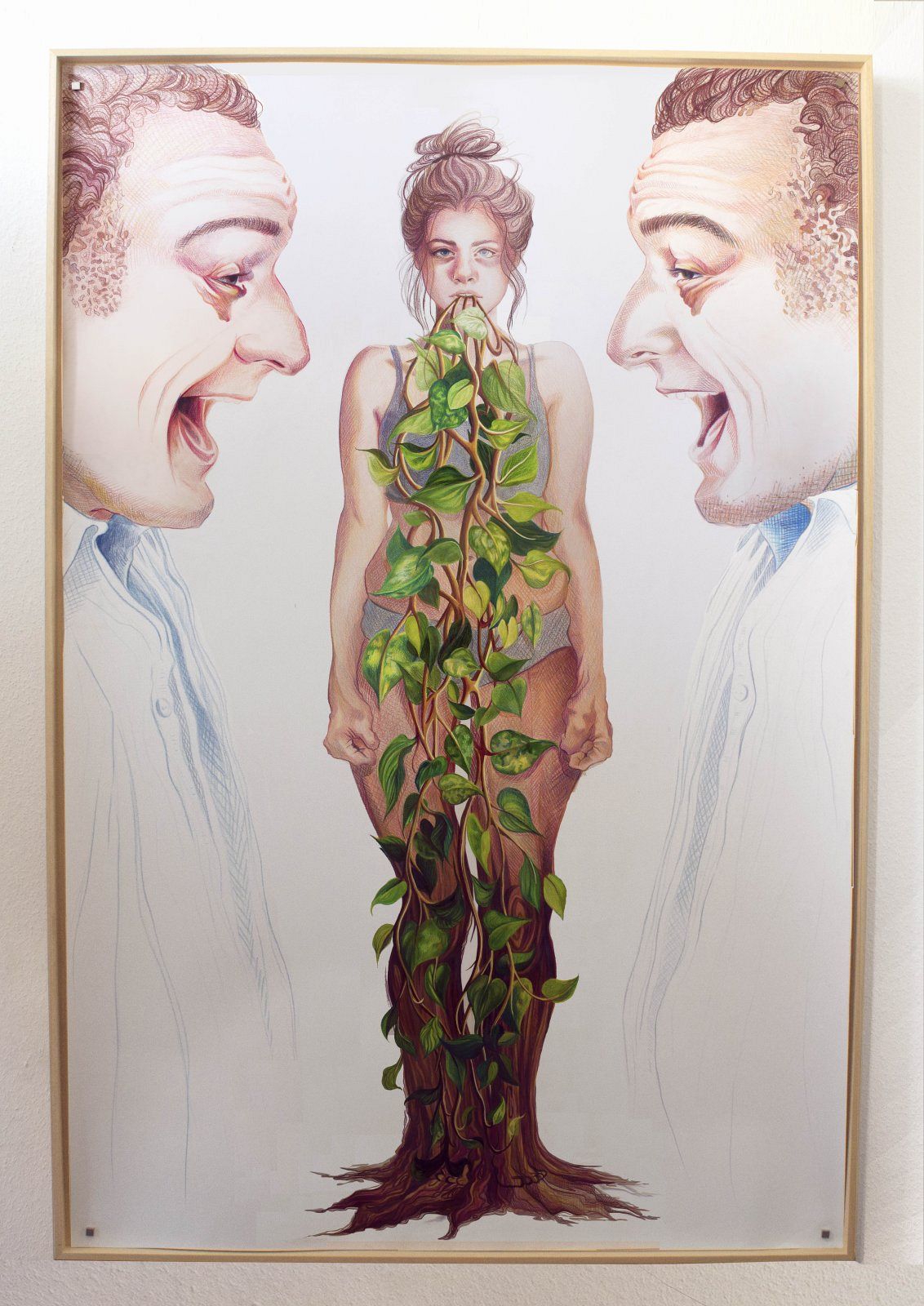
CONSTITUTIVE MYTHOLOGIES: TRACING THE GAZE OF THE DUTCH ARTWORLD AS IT FACES ITS DISCOURSES OF ABUSE
Thesis
My thesis "CONSTITUTIVE MYTHOLOGIES: Tracing the Gaze of The Dutch Artworld As It Faces Its Discourses of Abuse" critically interrogates discursive rhetorics at the heart of the mythologies of art and artists that facilitates the act of looking away from abuse and allows predators to thrive within our art institutes. It argues that mythologies surrounding artists as 'bad boy genius' are predicated on mechanisms of silence that allow people to look away by employing discursive rhetoric like a warped version of 'The Author is Dead' argument, framing call-out culture as Witch Hunt, and conjuring versions of the Us/Them binary in order to disclose the possibility of harassment. These findings are discussed in the context of KABK's response to the evidence of institutional abuse that emerged in 2020, in order to uncover how the institution's own mechanisms of silence operate.
Download it here.